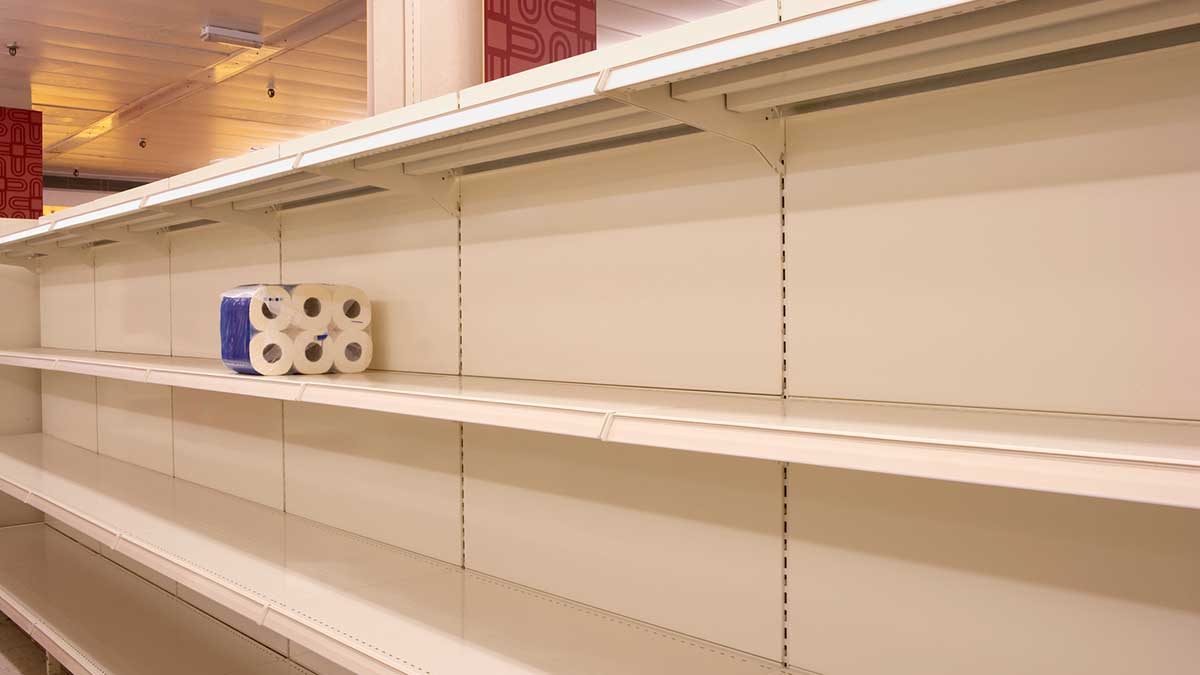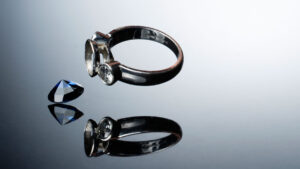As rough diamond prices surge, the market could be in short supply for years to come

Pic: Getty
Following the closure of Rio Tinto’s (ASX:RIO) Argyle diamond mine in 2020, experts say global rough diamond production is unlikely to reach pre-pandemic levels for at least the next five years and could be suppressed for as long as a decade.
The annual report on the state of the diamond industry from consultants Bain and Co., released this week, paints a pretty picture for companies on the mining side of the diamond trade, who have returned to profit in a big way in 2021.
According to Bain rough prices were up a massive 21% in 2021 after initially copping a big hit both before and during the pandemic of 7% in 2019 and 11% in 2020. Rough diamond sales rose an incredible 62% driving inventories to historically low levels of 29 million carats.
The recovery in demand and prices for rough diamonds has outpaced polished, up 9% in 2021, though remain 26% their historic max.
Overall mining and retail firms in the diamond industry hit decade-high profitability, with profits across the industry soaring by US$7 billion compared to 2020, with miners’ margins up 9-11% on average.
But rough diamond supply could support strong market conditions for miners and explorers for years to come.
Having fallen from 139Mct in 2019 to 111Mct in 2020 and 116Mct in 2021, production is expected to rise to 120Mct or more in 2022 according to Bain, but production growth will likely be capped at 1-2% a year for the next half-decade.
“Promising demand growth and production scarcity support stability or further price growth for rough diamonds,” Bain said.
Collapse in mined diamond supply could be longer
Bain partner Olya Linde doubled down on that outlook in an interview with trade pub Rapaport News.
She reckons mined diamond supply could be in deficit for as long as a decade.
“Demand was so strong, production levels had to be supplemented by inventory,” she said.
“We have not seen such strong demand for a long time. Actually, I have not seen such a big boom in all my time in the industry. Going forward, it’s not that easy to just add production.
“So, while demand will continue to remain strong, the ability for players to increase production in the short term is very limited.”
In order for mined supply to recover to the 139Mct produced before the pandemic hit in 2019 would take a major new and unforeseen discovery.
“We have to remember not only do we have a very limited number of new projects, but existing mines also have declining production levels,” Linde told Rapaport.
Argyle a major factor
Odessa Minerals (ASX:ODE) CEO Alistair Stephens, whose explorer is one of only a handful of ASX-listed companies focused on diamond exploration, said the closure of Rio’s Argyle mine at the end of 2020 had opened a window of opportunity.
Odessa took advantage of the turn in the diamond market to raise $6 million at 2c a share last year to list through the shell of Fargo Enterprises.
“I think it doesn’t take Blind Freddy to draw the logic that when you take Argyle off the market — and I think it was 8 million or 11 million carats per year disappears — that there’s going to be an under supply.
“So it’s painting a pretty positive picture for explorers across the globe for natural diamond exploration and development.
“I would have to say that Argyle really subdued the opportunity for entry into the market. It was such a terrific producer on its own that it subdued a lot of the opportunities and enthusiasm for market participation.
“With it gone and from what we’re seeing from Rio or hearing from Rio … it’ll never open again, it’s closed forever. So it’s not as if it looks like it’s going to reopen because the market changes.
“You can’t replace Argyle, it’ll never get found again, something like that, I think it’s probably one of the greatest diamond mines ever in terms of its volume. So it now makes opportunities for smaller, high quality gemstone discoveries much more plausible and much more exciting.”
Argyle has also left a massive gap in the market for fancy coloured stones, given it supplied over 90% of the world’s fancy pink diamonds, something which became the Kimberley mine’s hallmark and selling point.
While large, rare and high value gemstones have been rising in price — even more so in the case of fancy colours — Stephens said “micro diamonds” were also enjoying a lift in demand.
“There’s also an increase in the micro diamond price, which is interesting it’s not just in the large gem market, there’s been an increase in the smaller quality gems as well. So it seems to be a broader market enthusiasm for natural diamonds,” he said.
That is borne out in reports from recent De Beers and Alrosa tenders. Anglo-American owned De Beers and Russia’s Alrosa, the world’s largest rough diamond sellers, set prices at their tenders based on what they think the market will pay.
At its recent sales in January De Beers hiked roughs by 5-8% and smaller, cheaper stones by 15-20%.
Alrosa reportedly posted similar results, lifting its larger stone prices by 5-7% and its smaller diamonds by 12-18% from already high levels.
A fork in the road
Bain sees the diamond market remaining strong for the next six months.
There are two possible mid-term scenarios, a continued rebound or a short term readjustment, where it gradually returns to pre-pandemic trend levels.
Bain thinks the former is more likely.
“Continued growth in demand and limited supply of rough diamonds will benefit both miners and midstream players, supporting further strong price growth for polished and rough diamonds,” the report said.
“Supply growth from the pre-owned jewelry market is also limited at least in the midterm: the initial retail mark-ups and pawnshops’ discounts should be offset by a sharp diamond price increase and trusted valuation mechanisms should be established in order to induce a significant supply of recycled diamonds.
“The most likely scenario is closer to a ‘continued growth across all segments’ outcome since the industry is in a much better financial position than it was during previous recessions. Inventory levels of diamond jewelry and polished and rough diamonds are also among the lowest and healthiest the industry has seen in the past decade.”
Stephens said given the complexity of diamond exploration, it would be difficult to make a discovery of a similar scale to Argyle which could address the supply shortfall.
“If you just look at the terminology of diamond, it’s how many carats per 100 tonnes of material,” he said.
For context, 5000 carats go into a kilo and five into a gram. The unit of measurement in gold samples is grams to the tonne.
“So it gives you an idea of the main picture about how rare these things are, the distribution is so unlike any other geochemical mineral commodity.”
Stephens said getting a diamond in a standard drill hole “would be a miracle”.
“So that’s why bulk sampling is so important to find the distribution and the presence of macro diamonds.
“So discovering it is particularly difficult, you look for indicator minerals, you don’t often find diamonds, but when you get diamonds, often it’s a really good indicator that you’ve got something of interest somewhere.”
Odessa looking to find new Aussie diamond mines
Odessa is one of three ASX-listed companies aiming to revive the Australian diamond industry that went from one of the world’s largest to nothing overnight with Argyle’s closure.
Its exploration efforts are largely focused on the Aries Diamond Project in the Central Kimberley, which hosts what it says is the largest known diamond-bearing kimberlite in WA.
Modern modelling techniques have mapped the Aries North and Aries pipes coalescing at 300m depth, with the kimberlites running to 900m below the Earth’s surface.
They suggest the pipes have a footprint of 800m by 350m starting 400m below surface with a dyke-like body, comparable to the footprint of the Argyle lamproite system, extending for 2.8km to the south.
Bulk sampling at Aries in the early 1990s by Triad Minerals (4.8 carats per 100t) and between 2004 and 2006 by United Kimberley Diamonds (181 diamonds for 25.34ct) has uncovered significant diamond occurrences.
“We’ve just had some recent geophysical modelling that gives us a lot of confidence about some of the geometry of the areas of pipe and the distribution of blows and pipes along a trend which looks like a dyke and a fissure and various blows,” Stephens said.
“We’d love to stick some deep holes into some of those projects or prospects. And specifically areas itself where we know there’s been gems found in the past from bulk sampling and from drilling.
“One particular hole we’ve picked up on has got a micro diamond count of about 10 micro diamonds per 100 kilos at the surface, then increases to 120 at about 300m down hole.
“So we’re probably seeing a lot of dilution in the surface and enrichment down below where we’ve got genuine kimberlite material that’s not been contaminated with wall rocks.
“The important thing is that the bulk sample there returned gem quality diamonds up to 6mm.
“So first of all, we’d like to see the geometry and the shape of this pipe and some of the grade distribution from drilling in micro diamond counts.
“And then we’ll follow up later on how we actually get a bulk sample from that. So we’ve got a fair bit of enthusiasm for this.”
Also operating in the Kimberley is Burgundy Diamond Mines (ASX:BDM), which last year acquired the Ellendale diamond mine, mothballed in 2015 and famous for its production of fancy colour Ellendale yellows.
Burgundy has also launched a luxury polished diamond brand, and announced last year it had acquired one of the five hero stones sold at the last Argyle tender, the 1.79ct purplish pink Argyle Stella.
Lucapa Diamond Company (ASX:LOM) also entered the Australian market last year with the purchase of the closed 4.4Mct Merlin diamond mine in the Northern Territory.
A scoping study released in December last year showed the mine would produce 153,000ct per annum on average over a 14-year mine life with a pre-production cost of $96m, generating $1.6 billion in revenue and $50m of EBITDA a year.
The project would take two years from FID to build with payback in the second year of production, a pre-tax NPV of $343m and an attractive IRR pre-tax of 59%.
Lucapa also owns stakes in the Lulo mine in Angola (40%) and Mothae mine in Botswana (70%), which together generated a record full year revenue on a 100% basis of $135m at $2150/ct, and recently responded to the improvement in diamond market conditions to restart exploration at its Brooking project in WA’s West Kimberley.
Diamonds share prices today:
Related Topics
UNLOCK INSIGHTS
Discover the untold stories of emerging ASX stocks.
Daily news and expert analysis, it's free to subscribe.
By proceeding, you confirm you understand that we handle personal information in accordance with our Privacy Policy.








